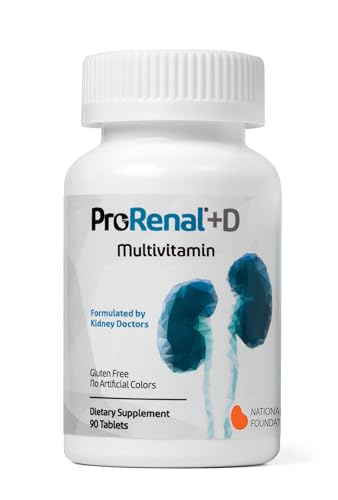Veltassa and Kayexalate are both resins that bind with potassium in the gut and prevent the absorption of dietary potassium into the bloodstream.
Until the last few years, Kayexalate was the only resin available. Over the last few years, new potassium-binding resins have been approved, which are considered safer than kayexalate and may be more effective as well.
Here is a list of the FDA-approved potassium exchange resins:
Potassium exchange resins | FDA-approval dates |
| Kayexalate | Not specified |
| Patiromer | 21st October 2015 |
| Sodium Zirconium Cyclosilicate | 18th May 2018 |
Veltassa Vs Kayexalate:
Veltassa is the brand name of Patiromer. It is manufactured by Relypsa Pharmaceuticals and approved by the FDA for the treatment of hyperkalemia in 2015.
Kayexalate, on the other hand, has been in the market for many years. It is probably been used since 1950.
There are subtle differences between the mechanisms, efficacy, and side effects of Veltassa and Kayexalate. These differences are discussed below:
Veltassa is more specific than Kayexalate:
The active ingredient of Veltassa is Patiromer Sorbitex Calcium. It specifically binds with Potassium in the diet in exchange for Calcium ions.
In the colon, it also binds with Magnesium and may also lower plasma Magnesium levels. Veltassa, therefore, causes hypokalemia and hypomagnesemia.
On the other hand, Kayexalate is the brand name of Sodium Polystyrene Sulfonate (SPS). It binds with dietary Potassium in exchange for Sodium ions.
However, it also binds with Calcium and Magnesium and may cause severe Hypomagnesemia and Hypocalcemia.
In addition, the Sodium in Kayexalate may cause fluid overload, especially in patients with heart failure and hypertension.
Kayexalate has a relatively rapid onset of action but a more frequent dosing schedule:
The onset of action of Kayexalate is about 2 hours. It may vary, but it is typically between hours to days. It is administered every 6 to 8 hours, depending on the severity of Hyperkalemia.
Patiromer (Veltassa), on the other hand, has a slow onset of action of about 7 hours compared to 2 hours of Kayexalate. It is usually administered once daily.
Where rapid removal of potassium is needed, Kayexalate may be preferred. However, for long-term use, as in patients with chronic hyperkalemia, Veltassa may be preferred because of the ease of administration.
Veltassa has fewer drug interactions than Kayexalate
Kayexalate binds to many substances other than potassium. It binds to many drugs that are taken orally.
The FDA issued a warning to healthcare providers in 2015 about the potential drug interactions between Kayexalate and orally administered drugs [Ref].
Specifically, the FDA pointed to a study in which the following drugs were given with Kayexalate:
- Amlodipine
- Metoprolol
- Amoxicillin
- Furosemide
- Phenytoin
- Warfarin
Because the drugs included in the study were taken from various classes including blood pressure-lowering medicines, antibiotics, seizure medicines, drugs used to treat heart failure, and blood thinners, the FDA recommended spacing Kayexalate and all other medicines by 3 hours.
It is therefore recommended to give oral medicines at least three hours before or three hours after administering Kayexalate.
This time interval should be increased to six hours in individuals who have gastroparesis such as diabetics or those on medications that lower gut motility, like GLP-1 analogs (Ozempic, Victoza, Trulicity) and Mounjaro (Tirzepatide).
In contrast to Kayexalate, Veltassa has fewer drug interactions. Because it is a resin that can bind to drugs (similar to Kayexalate), the manufacturer recommends avoiding it with concomitant oral medicines, especially life-saving medicines such as antibiotics like Ciprofloxacin, antidiabetics (metformin), and Levothyroxine.
The manufacturer recommends a time interval between oral medication and Veltassa to be at least 6 hours. Although this is longer than Kayexalate, it is more feasible because Veltassa is administered once daily.
Veltassa has fewer side effects compared to Kayexalate
One of the main advantages of Veltassa is its safety compared to Kayexalate. Veltassa is associated with fewer side effects compared with Kayexalate.
In addition, more studies have been carried out on Veltassa use in Pregnancy and hence, it is labeled as a “Category B Drug in Pregnancy” while Kayexalate is labeled as a “Category C Drug in Pregnancy”.
The table below compares the contraindications and side effects of Veltassa and Kayexalate:
Side effects | Veltassa | Kayexalate |
| Contraindications |
|
|
| Serious side effects |
|
|
| Other side effects |
|
|
Veltassa is more effective than Kayexalate:
Data about the efficacy of Kayexalate in patients with hyperkalemia is limited. It is generally said that for 1 mg of potassium in the diet, you need 1 g of Kayexalate resin. The average daily potassium intake of a normal person is between 2000 to 3000 mg 90% of this potassium gets absorbed.
Thus, when administered in a dose of 15 g every six hours, it is going to create a negative potassium balance of only 60 g per day.
Whether this calculation correctly describes the potassium balance is not validated. Hence, frequent monitoring is required unless the serum potassium is brought down to normal.
The efficacy of Veltassa has been studied in trials. In a trial of 243 patients, Veltassa brought down potassium by -0.65 mEq in patients with baseline potassium ranging from 5.1 to 5.5 mEq/L.
For those with a baseline potassium of 5.5 to 6.5 mEq/L, Veltassa brought down potassium by -1.23 mEq/L in 4 weeks [Ref].
Kayexalate is widely available and may be Cheaper than Veltassa
In the United States, the average cost of Kayexalate powder is about $800 USD for a total of about 450 g of Kayexalate.
The average cost of 4 sachets of Veltassa, 8.4 g, in the United States is about $195 USD.
Thus, the average daily cost of Kayexalate is USD 106 if given in a dose of 15 g every 6 hours, while the average daily cost of Veltassa is USD 48.75 if given once daily and $146.25 USD if given in the maximum dose of 25.2 g per day.
In Conclusion:
Comparison | Veltassa | Kayexalate |
| Drug Name | Patiromer Sorbitex Calcium | Sodium Polystyrene Sulfonate |
| FDA Approved | 21st October 2015 | 1958 |
| Specific | Yes | Non-specific |
| Onset of action | 7 hours | 2 hours |
| Dosing frequency | Once daily | 3 to 4 times a day |
| Drug Interactions | Yes but fewer than SPS | Yes |
| Side effects | Fewer side effects | More side effects |
| Effectiveness | Proved in trials | Limited data |
| Availability | Not available everywhere | Widely available |
| Cost | May be more costly | Cheaper |
- Premium Ingredients: Our tea blend features high-quality Berberine, aromatic Oolong, and refreshing Mint, all organicall…
- Mint Flavored: Enjoy the cool, crisp taste of mint that perfectly complements the robust flavors of Berberine and Oolong…
- Unsweetened with Zero Calories: Crafted for those who appreciate the natural flavors of tea, our blend is completely uns…
- ADVANCED KIDNEY CLEANSE & DETOX SUPPORT – Maintain optimal kidney function with this high-potency herbal kidney health s…
- URINARY TRACT & BLADDER WELLNESS – This kidney supplement is crafted with botanical extracts that help flush out impurit…
- NATURAL HERBAL BLEND FOR KIDNEY SUPPORT – Features a potent combination of cranberry extract, uva ursi, stinging nettle,…







